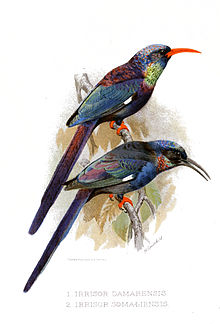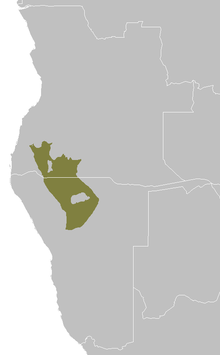| Violet wood hoopoe | |
|---|---|
 | |
| Illustration (above) with black-billed wood hoopoe (below) | |
| Scientific classification | |
| Domain: | Eukaryota |
| Kingdom: | Animalia |
| Phylum: | Chordata |
| Class: | Aves |
| Order: | Bucerotiformes |
| Family: | Phoeniculidae |
| Genus: | Phoeniculus |
| Species: | P. damarensis |
| Binomial name | |
| Phoeniculus damarensis (Ogilvie-Grant, 1901) | |
 | |
| General range: the Angolan mopane woodlands | |
The violet wood hoopoe (Phoeniculus damarensis) is a species of bird in the family Phoeniculidae. It is found in Angola, Kenya, Namibia, and Tanzania. It looks similar to the black-billed wood hoopoe but with a red beak and a green throat. It has coppery and violet mantle feathers. [2]
